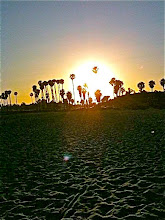This article talked about the relationship of sounds and images in a film. It starts out by giving different examples of the very different impressions you can get of watching parts of films silently compared to with the audio. The audio can often link images together and make something more cohesive. The absence of sound in the very same clip can make the viewer question whats going on and who exactly two shots can go together or why they are in that order. Its almost like the sound in a way distracts you and makes you assume that things fit together a lot better than they actually do. It can just give you a very different response and opinion of a film or a part of a film when you watch in without audio compared to when audio is present. The reading claims that we have an “added value” when the two relations are combined. This “added value” in the text means “the expressive and informative value with which a sound enriches a given image so as to create the definite impression, in the immediate or remembered experience one has of it, that this information or expression ‘naturally’ comes from what is seen, and is already contained in the image itself.” I think that basically this is just saying that the audio can give you such a different opinion; it adds so much to an image or group of images. It changes how you see the clip and will make you remember the clip in a very different way. The text gives some examples of the very different opinions that you get from watching the same scene with and without sound and its really interesting to look at that and how differently people do react.
There is an immediate connection between what is seen and what is heard and taking away one of these aspects away makes things completely different. The audio gives a viewer so many more hints as to what is going on in the story and the possibility of where the story is going to go; it’s the combination of dialogue, music, sound effects…it all contributes to the way you interpret something and it all works together to continue on with the plot.
The text goes on to talk about “empathetic music,” music that works to help the viewer have the ability to feel the feelings of others. I think that this is totally true. Music can have a huge effect in the way people see something and the way in which they interpret it. Music is such a big part of people’s lives in today’s culture and it means so much to people. Many people are so able to identify with music that it only makes sense that music would contribute to an image.
Another reason why sound added to an image can be so effective is because of the fact that the ear analyzes, processes, and synthesizes faster than the eye. I assume that this makes what one hears even more important since it could be making the first impression.
The text then states that sound “dramatizes shots, orientating them toward a future, a goal, and creation of a feeling of imminence and expectation. The shot is going somewhere and it is orientated in time.” This makes total sense too. The sound is helping it along; helping the story move smoothly and seamlessly forward.
Towards the end of the article other topics are discussed such as the how cinematic and cultural elements also play a role in the audio of a film.
